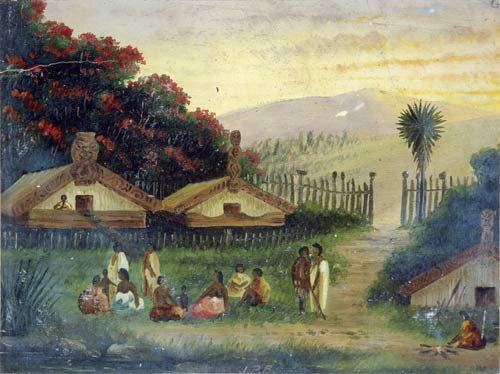
This painting by John Backhouse shows a Māori village in the North Island, around the 1880s. A woman tends to a fire outside one of the whare (houses). Scholar Peter Buck (Te Rangi Hīroa) noted that people kept their fires burning to cook food while they occupied land. Unsurprisingly, the visibility of fires came to symbolise continuous occupation, leading to the phrase ahi kā (lit fire) or ahi kā roa (long burning fires).
Using this item
Alexander Turnbull Library
Reference:
E-053-012
Oil on board by John Philemon Backhouse
Permission of the Alexander Turnbull Library, National Library of New Zealand, Te Puna Mātauranga o Aotearoa, must be obtained before any re-use of this image.






Add new comment